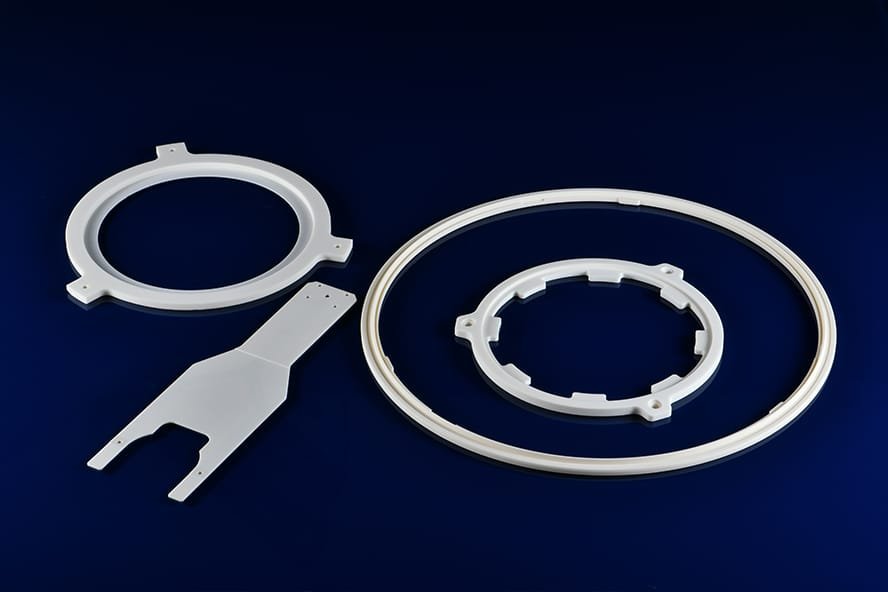Thermal shock resistance is one of the important properties of advanced ceramics, which can prevent advanced ceramics from cracking or failing due to drastic temperature changes under extreme thermal conditions. Through this article, you will learn what factors affect thermal shock resistance, the performance of thermal shock resistant ceramics, parameter comparison, etc.
Factors Influencing Thermal Shock Resistant
- Thermal conductivity
- Coefficient of thermal expansion
- Modulus of elasticity
- Fracture toughness
Generally speaking, a lower coefficient of thermal expansion can reduce the stress caused by temperature changes. The higher the thermal conductivity, the smaller the internal temperature difference of the material, thereby reducing local stress. A low elastic modulus can absorb more strain before the material breaks, and a high fracture toughness is less likely to cause cracks caused by stress.
Advanced Ceramics for Thermal Shock Resistant

Zirconia ceramics (ZrO₂)
High fracture resistance and strength. Suitable for cyclic thermal loads and thermally damaged coatings.

Silicon Carbide Ceramic(SiC)
Excellent conductivity and strength. Ideal for use in harsh environments.

Silicon Nitride Ceramics (Si₃N₄)
Excellent thermal and mechanical properties. Excellent thermal shock resistance.

Alumina ceramics (Al₂O₃)
High mechanical strength and good wear resistance. Moderate thermal shock resistance.
Parameter Table: Thermal Shock Resistance Comparison
Thermal Shock Resistant Applications
- High-temperature furnace components: Zirconia is commonly used in kiln and furnace linings due to its ability to handle extreme temperature gradients.
- Oxygen sensors: Zirconia’s ability to function effectively in changing temperatures makes it ideal for oxygen sensors in combustion systems.
- Cutting tools: Their high hardness and ability to endure thermal cycling make them excellent for applications like cutting and grinding.
Silicon Carbide Ceramics (SiC)
- Semiconductor industry: Used in high-power, high-temperature electronic components due to its high thermal conductivity and wide bandgap properties.
- Heat exchangers: SiC’s excellent thermal shock resistance makes it ideal for heat exchangers in industrial processes that involve rapid temperature changes.
- Brake discs and clutches: Automotive and aerospace industries use SiC ceramics for high-performance brake discs and clutches due to their durability under fluctuating thermal conditions.
Silicon Nitride Ceramics (Si₃N₄)
- Gas turbines and jet engines: Due to their high-temperature stability, silicon nitride is used in turbine blades, seals, and other engine components that face rapid temperature changes.
- Bearings and mechanical seals: Used in environments where resistance to wear, high temperatures, and thermal shock are essential.
- Cutting tools: Silicon nitride’s toughness and resistance to thermal cycling make it an ideal material for industrial cutting tools and dies.
Alumina Ceramics (Al₂O₃)
- Electrical insulators: Its high thermal shock resistance makes alumina ideal for electrical insulators in power transmission and distribution.
- Heat shields: Used in aerospace and automotive industries, alumina is utilized for heat shields and other components that experience extreme temperature changes.
- Wear-resistant components: Due to its hardness, alumina is used in applications such as bearings, wear-resistant linings, and pump components.
